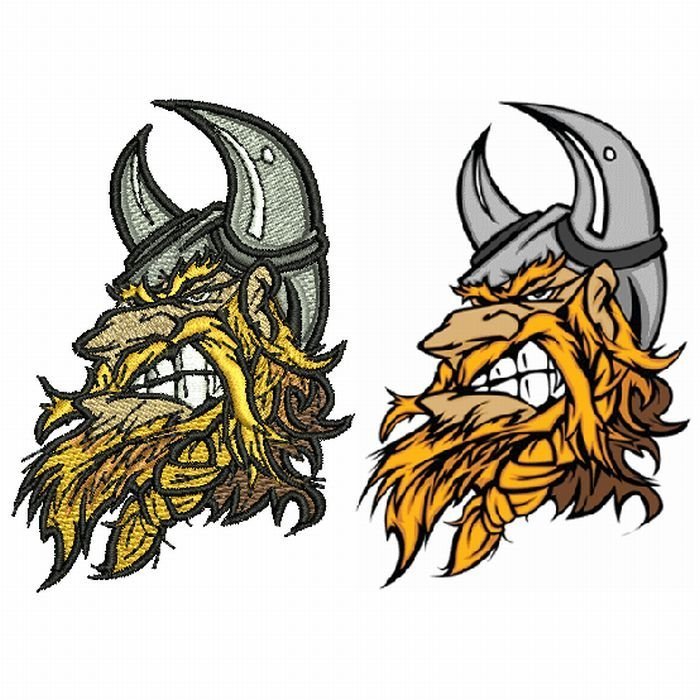Customized Digitizing for Embroidery: Tailored to Your Demands
Customized Digitizing for Embroidery: Tailored to Your Demands
Blog Article
Streamlining the Art of Needlework Digitizing: Step-by-Step Overview
As innovation proceeds to advancement, the digitization procedure has ended up being much more accessible, permitting lovers to bring their intricate styles to life with convenience. In this guide, we will unravel the complexities of needlework digitizing, damaging down each step systematically to simplify the procedure and encourage both newbies and skilled embroiderers alike.
Comprehending Needlework Digitizing Software Application
Embroidery digitizing software program functions as a crucial tool for transforming intricate styles into electronic formats compatible with embroidery makers, facilitating exact stitching and customization. This specific software application allows individuals to import numerous image file styles, such as JPG or PNG, and transform them right into embroidery machine-readable formats like DST, EXP, or PES - Digitizing for Embroidery. By utilizing features like stitch editing and enhancing, underlay options, and thread color choice, digitizing software allows customers to regulate every facet of the design process
Furthermore, advanced embroidery digitizing software program uses devices for developing intricate layouts, adjusting stitch thickness, and incorporating intricate details. Users can also preview the design before stitching it out, guaranteeing accuracy and reducing errors. Additionally, numerous software program programs offer automatic functions that assist improve the digitizing process, saving effort and time.
Recognizing the capacities of needlework digitizing software program is crucial for attaining high-grade outcomes in embroidery projects. By mastering this device, needlework lovers and professionals can unleash their creativity and bring intricate designs to life with precision and efficiency.

Choosing the Right Style Data
After familiarizing yourself with the capabilities of needlework digitizing software, the following critical action in the procedure is choosing the best design file for your job. Digitizing for Embroidery. When picking a style declare needlework digitizing, it's crucial to take into consideration the complexity of the design, the dimension of the last item, and the kind of fabric you will certainly be collaborating with
For elaborate designs with great details, a high-resolution image or vector data is recommended to ensure that the needlework device can accurately reproduce the layout. Furthermore, the size of the end product plays a significant function in selecting the appropriate style file. Bigger designs might require greater resolution documents to maintain clarity and intensity.
Furthermore, the sort of fabric you will be stitching on influences the option of layout file. Different fabrics may call for adjustments in the style documents to guarantee that the stitches are effectively aligned and the style looks like planned. By very carefully picking the best style documents based upon these factors, you can set on your own up for an effective embroidery digitizing procedure.
Digitizing Tools and Strategies
Utilizing specialized software application and accuracy strategies, digitizing devices are important in changing intricate designs into embroidery-ready data. Needlework digitizing software program, such as Wilcom, Hatch, or Embrilliance, gives the essential platform to convert artwork right into stitch information. These programs supply features like stitch modifying, rug choices, and lettering tools to make sure the layout converts flawlessly onto textile.
Among the vital strategies in digitizing is developing a clear course for the needlework device to adhere to. This entails digitizing each aspect of the go right here layout with accuracy, establishing stitch see page kinds, thickness, and instructions. By utilizing devices like digitizing tablets or software-specific plugins, embroiderers can attain a high degree of precision in their digitized styles.
Moreover, grasping the art of underlay sewing is critical for generating top quality embroidery. Underlay stitching maintains the textile and produces a structure for the design, making sure that the end product is both aesthetically appealing and resilient. By comprehending these digitizing tools and strategies, embroiderers can raise their craft and bring elaborate layouts to life with accuracy and effectiveness.
Tailoring Stitch Types and Directions
Having established a foundation in digitizing devices and methods, a vital facet in advancing embroidery workmanship exists in personalizing stitch types and instructions with precision and objective. The choice of stitch kinds can dramatically affect the total look and texture of the stitched design. Satin stitches, recognized for their smooth and shiny coating, work well for developing borders and message. On the other hand, fill stitches are ideal for covering larger locations effectively. By purposefully integrating these stitch kinds, embroiderers can achieve deepness and dimension in their styles.
In addition, the instructions of stitches plays a critical duty in enhancing the aesthetic allure of the last needlework. By trying out with various stitch angles and patterns, embroiderers can bring their layouts to life with impressive information and complexity.
Testing and Refining Your Digitized Style
To guarantee the accuracy and quality of your digitized design, comprehensive testing and refinement are essential actions in the embroidery digitizing process. Once you have actually finished the digitization of your style, it is vital to check it before waging the actual needlework. Checking enables you to identify any kind of prospective problems such as thread find more info breaks, sew thickness issues, or design distortions that might influence the outcome.

After screening, it is very important to fine-tune your digitized design based on the feedback from the examination sew-out. This might include tweaking stitch setups, changing densities, or making adjustments to the general design to accomplish the desired end result. By repeating with testing and improvement, you can adjust your digitized style to excellence prior to relocating forward with the actual needlework procedure.
Verdict
Finally, understanding the art of embroidery digitizing requires a complete understanding of the software program, choosing the right style file, making use of digitizing tools and strategies, customizing stitch kinds and instructions, and testing and improving the digitized design. By adhering to these steps, embroiderers can streamline the digitizing process and produce high-grade embroidered layouts with precision and performance.
Report this page